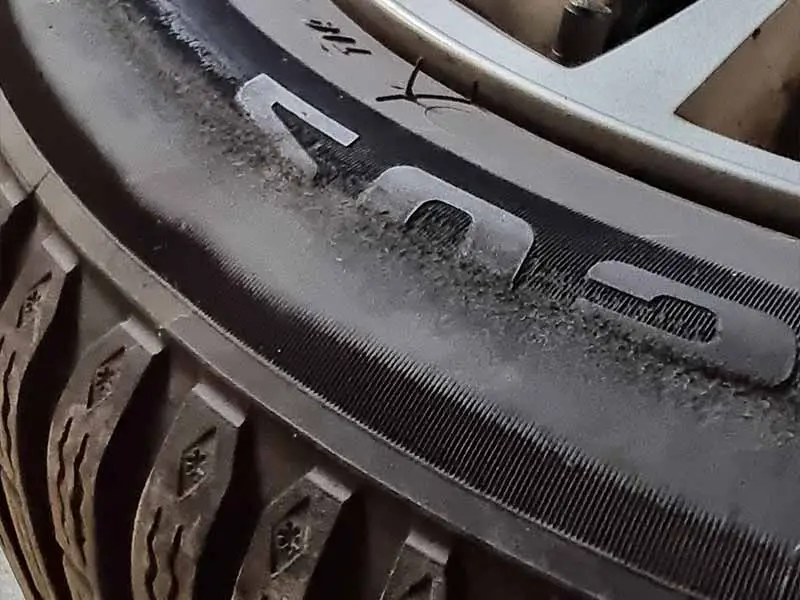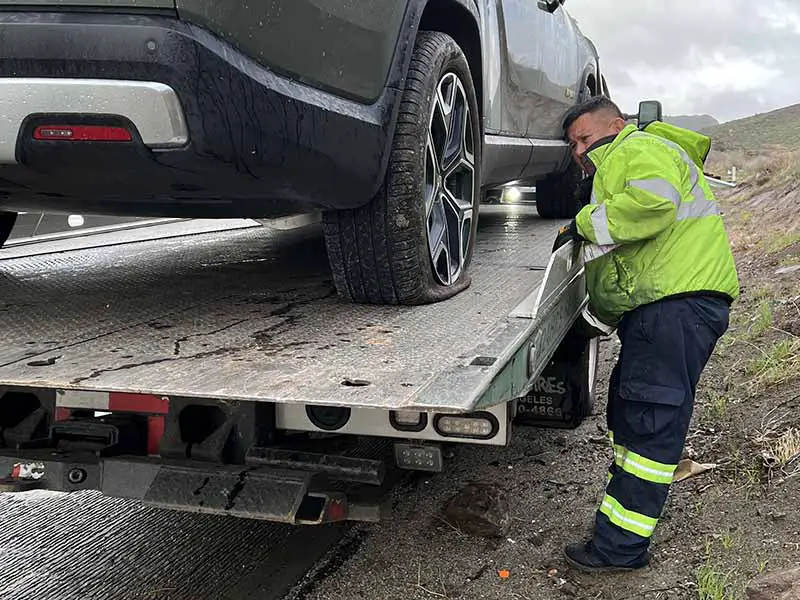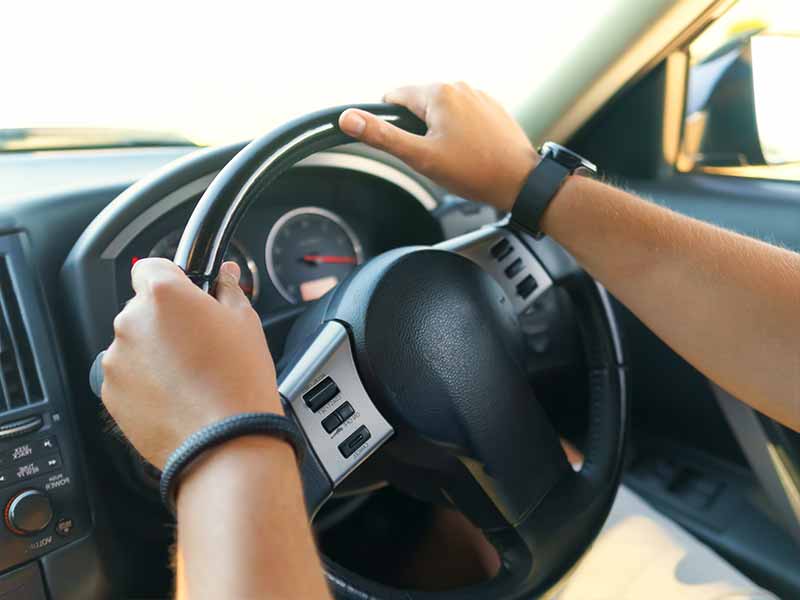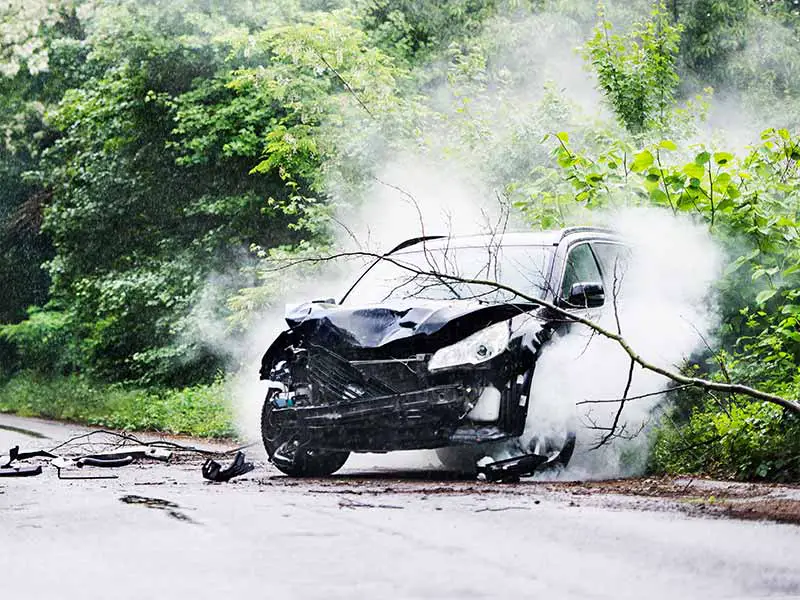Picture this: you’re cruising down the highway, belting out your favorite tunes, when suddenly, BANG! Your car jolts, your heart skips a beat, and your joyride turns into a nightmare. Welcome to the world of tire blowouts – unexpected, terrifying, and potentially dangerous.
What Causes A Tire Blowout?
Tire blowouts happen when a tire suddenly loses all its air pressure, typically due to being underinflated, damage or wear, or carrying too much weight. Recognizing the early warning signs and understanding how to react can make all the difference.
In this article, we’ll delve deep into the world of tire blowouts. We’ll uncover what causes them, how they differ from a simple flat tire, and how you can spot the warning signs. We’ll also walk you through what to do if your tire blows out while driving and share crucial tips to help prevent blowouts and keep you safe on the road.
Let’s take a closer look.
Understanding What Causes a Blowout
Let’s dive straight into the heart of the matter – a tire blowout. It’s like a sudden pop followed by a flat tire, but much, much scarier. So, what’s the big deal? Why does it happen? Well, here’s the scoop.
The Number One Culprit: Underinflated Tires
If tires had a most-wanted list, underinflated tires would be right at the top! It’s the number one cause of blowouts. Now, you might ask, “Why so?” Let’s break it down.
Tires are not just rubber. Inside, they’re a maze of fabric and steel wires. They are designed to hold a certain amount of air pressure. When the air pressure is too low, the tire’s internal components flex and heat up. This heat can cause the tire’s structure to weaken, leading to a blowout.
Picture this: it’s a hot summer day, and you’re cruising down the highway. The sun’s out, and the road’s heating up. If your tire pressure is low, your tires are already working overtime, flexing and building up heat. Add the hot road into the mix, and boom – you’ve got a blowout in the making.

Other Causes of Tire Blowouts
Of course, underinflated tires aren’t the only bad guys. There’s a whole lineup of usual suspects. Here’s a rundown:
- Uneven Tread Wear: Tires are supposed to wear down evenly. If they don’t, one part can become thin and weak, and you guessed it, cause a blowout. Remember to rotate your tires regularly to ensure even wear.
- External Factors: Potholes, sharp objects, and even curbs can damage your tires. If the impact is hard enough, it can cause an instant blowout. Even if it doesn’t, it could lead to a slow puncture that turns into a blowout later.
- Overloading Your Vehicle: Tires are like the muscles of your car. If you load up your vehicle with more weight than it’s designed to handle, you’re asking too much of your tires. The extra weight can cause your tires to fail, leading to a blowout.

Tire Blowout: Potential Damages and Risks
Let’s be real, a tire blowout is like the unwelcome guest at a party. It shows up uninvited, causes a scene, and leaves a mess behind. So, let’s talk about the potential damages and risks that come with a blowout.
Physical Damage to the Vehicle
When a tire blows out, it doesn’t go quietly. It’s a powerful force that can cause real damage to your car or truck. Here’s the damage it might leave in its wake:
- Damage to the Wheel: The force of a blowout can bend or break the wheel. In some cases, it can even cause the tire to separate from the rim.
- Body Damage: When a tire blows, pieces of the tire can hit the body of your vehicle. This can cause dents, scratches, or more serious damage, especially if you’re driving at high speeds.
- Undercarriage Damage: If a blown tire causes your vehicle to scrape against the road, it can damage the undercarriage. This can be serious, affecting everything from the exhaust system to the oil pan.

The Danger Zone: Tire Blowouts on the Highway
Driving on the highway is like being in the fast lane, literally. Now, imagine your tire blowing out at those speeds. Scary, right? Here’s why it’s especially dangerous:
- Loss of Control: A blowout can make your vehicle difficult to control, especially if you’re cruising at high speeds on the highway.
- Traffic Collisions: A sudden tire blowout could lead you to swerve into another lane, potentially causing a collision.
- High-Speed Stopping: Stopping safely is a lot harder when you’re moving fast. A blowout could lead to a dangerous high-speed stop.
The Big Question: Can a Tire Blowout Be Fatal?
It’s a grim thought, but it’s important to address. A blowout can indeed be life-threatening. If a blowout causes you to lose control of your vehicle, especially at high speeds, it could lead to serious accidents. So, yes, a tire blowout can be fatal, which is why understanding and prevention are so important.

Tire Blowout vs Flat Tire: Understanding the Difference
In the world of tires, not all problems are created equal. There are flat tires, and then there are blowouts. Although they might seem similar, they’re different beasts altogether. So, let’s unravel the mystery.
What’s a Flat Tire?
Let’s start with the flat tire, our all-too-familiar nemesis. Picture this: You’re heading out for the day, you step into your car, and you notice it’s leaning a bit. You step out, take a look, and there it is – a deflated tire.
A flat tire is pretty straightforward – it’s a tire that’s lost all its air. It can happen gradually, like when you’ve got a slow puncture from a nail, or suddenly, if you hit something sharp on the road. Although flat tires are a pain, they’re usually not as dangerous as a blowout, especially if they deflate slowly.
The Big, Bad Tire Blowout
Now, let’s tackle the blowout, the more dramatic cousin of the flat tire. A blowout isn’t just a tire losing air; it’s a tire failing, and in quite a spectacular fashion. It’s like a flat tire that’s decided to go out with a bang!
A blowout can happen when a tire is weakened (maybe from underinflation or damage), and it’s put under stress (like from high speeds or a heavy load). The tire suddenly fails, and the air inside it escapes in a rush, causing a loud bang.
Why is a Tire Blowout More Dangerous?
Imagine you’re driving and your tire slowly deflates – you’d probably feel something is off, pull over, and discover you have a flat tire. Annoying? Sure. Dangerous? Not so much.
Now imagine you’re driving, and suddenly, BANG! Your car lurches, you lose control for a moment, and you see bits of tire flying. That’s a blowout, and as you can tell, it’s a whole lot scarier and riskier than a simple flat tire.

Recognizing the Warning Signs of a Tire Blowout
If you know what to look for, you can catch the early warning signs of a tire blowout. Let’s take a look at how you can stay one step ahead.
Tire Pressure Monitoring System: Your First Line of Defense
Consider your Tire Pressure Monitoring System (TPMS) as your personal tire bodyguard. It’s on the job, keeping a close eye on your air pressure in your tires. If the pressure drops below a safe level, it’ll let you know with a warning light on your dashboard.
Remember, underinflated tires are the number one cause of a tire blowout. So, take that warning light seriously. If it pops up, it’s time to check your tire pressure and inflate your tires as needed.
Visible Warning Signs: What to Look For
Even without a TPMS, your eyes can spot potential tire trouble. Here’s what to keep an eye out for:
- Deflated Tires: A tire that looks deflated or squished is likely underinflated. It’s a sign that your tire pressure is too low and could lead to a blowout.
- Smoke or Heat: Underinflated tires flex more and build up heat. If you see smoke coming from your tires or if they’re unusually hot to the touch, you could be on the road to a blowout.
- Damage or Debris: Look for cuts, punctures, or embedded objects in your tires. Even a small nail can lead to a slow puncture and eventually a blowout.
Don’t Forget to Check the Tread
Uneven tread wear is a silent culprit that can lead to a blowout. Regularly inspect your tires for uneven wear patterns. If the tread is deeper on one side of the tire than the other, or if there are patches where the tread is noticeably lower, it might be time for a tire rotation or alignment.

What To Do If Your Tire Blows Out While Driving
No one likes to think about it, but knowing what to do if your tire blows out could be a lifesaver. It’s all about staying calm, taking control, and acting safely. So, let’s walk through the steps.
Step 1: Don’t Panic and Keep Control
It might seem easier said than done, but keeping calm is vital. A blowout will feel like a big jolt, and there might be a loud bang. Despite the surprise, try to keep a firm grip on your steering wheel. It’s important not to overreact.
Step 2: Don’t Slam On The Brakes
Your instinct might be to stop as quickly as possible, but slamming on the brakes could cause you to lose control of your vehicle. Instead, allow the car to slow down naturally.
Step 3: Signal and Move to a Safe Spot
Once you have control, signal to the other drivers that you’re going to pull over. Look for a safe spot on the side of the road and steer your vehicle gently towards it. Remember, the goal is to get off the road as safely and smoothly as possible.
Step 4: Call for Help
After you’ve pulled over safely, turn on your hazard lights to signal that you’re having trouble. Then, it’s time to call for help. This might mean calling a roadside assistance service, a tow truck, or a friend or family member who can help you change the tire.
The Golden Rule: Safety First!
No matter what, always prioritize your safety and the safety of other drivers. If your tire blows out, try not to panic. The key is to keep control of your vehicle, slow down gently, and move safely off the road.
Resources
Below are some links you may find helpful when learning about tires
- How do you drive through a tire blowout? – Tire Rack
- What to do if you have a tire blowout – Allstate
Final Thoughts
We’ve learned that tire blowouts happen when a tire suddenly loses all its air pressure, usually due to being underinflated, excessive wear, damage, or carrying too much load.
We’ve discovered that the number one cause of blowouts is underinflated tires. A tire that doesn’t have enough air pressure can’t do its job properly, leading to excessive heat and, eventually, a blowout.
Knowing what to do if a tire blows out is crucial. Remember to keep a firm grip on the steering wheel, let your vehicle slow down gradually, and pull over safely when it’s possible.
Preventing blowouts is the best way to stay safe. Regularly checking your air pressure, not overloading your vehicle, rotating your tires regularly, keeping an eye on tire wear, and inspecting your tires for damage can go a long way in preventing a blowout.
Good luck and happy motoring.






